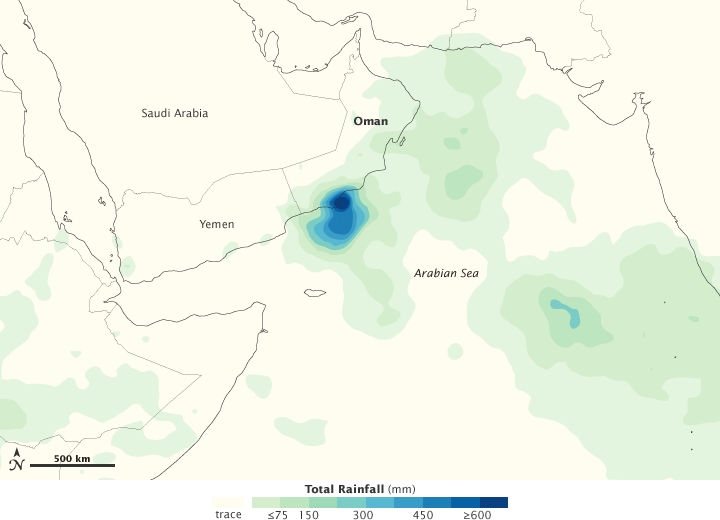


Tropical Storm Keila brought heavy rain to the Arabian Peninsula in early November 2011. Torrential rains claimed at least a dozen lives, and caused at least 200 injuries, according to news reports.
This color-coded image shows rainfall totals from October 30 to November 4, 2011. The heaviest rainfall—more than 600 millimeters or over 24 inches—appears in dark blue. The lightest rainfall—less than 75 millimeters or 3 inches—appears in light green. Trace amounts of precipitation are pale yellow.
An intense cell of rainfall appears just off the coast of Oman, with lighter amounts of rain stretching into Oman, Yemen, and over the Arabian Sea. AccuWeather reported that causes of death in the downpour in Oman included drowning, electrocution, and falling debris.
On November 8, 2011, rain was once again headed for Oman, this time associated with a new tropical depression, Tropical Cyclone Four.
This image is based on data from the Multisatellite Precipitation Analysis produced at NASA’s Goddard Space Flight Center, which estimates rainfall by combining measurements from many satellites and calibrating them using rainfall measurements from the Tropical Rainfall Measuring Mission (TRMM) satellite. This image is an estimate of the rainfall rate recorded when satellites measuring rainfall are overhead, and precipitation may be more or less intense at different times.
NASA Earth Observatory image by Jesse Allen, using near-real-time data provided courtesy of TRMM Science Data and Information System at Goddard Space Flight Center. Caption by Michon Scott.